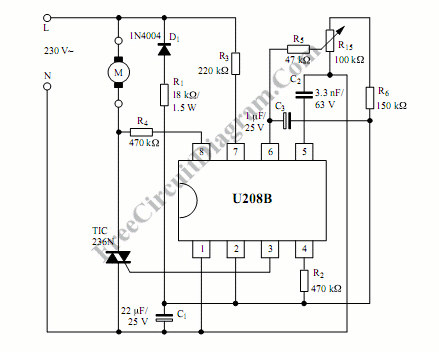Phase Control Circuit

A phase control circuit can be used to control the power delivered to an AC load. The phase control circuit control the AC waveform, cutting the cycle to give full cycle, half cycle, zero cycle, or somewhere in between. You can say this circuit is similar to a dimmer circuit, but the switching is synchronized with the zero crossing of the waveform.

The benefit of swithing the power in zero crossing condition is that the triacs doesn’t suffer power dissipation, thus increasing the overall efficiency. This phase control circuit is suitable for brushed AC motor, heater filament, or incandescent lamps.
The integrated circuit, U208B, is designed as a phase control circuit in bipolar technology with internal supply-voltage monitoring. As the voltage is built up, uncontrolled output pulses are avoided by internal monitoring. Furthermore, it has internal-current and voltage synchronisation. It is recommended as a low cost open-loop control. [Circuit’s schematic diagram source: TEMIC TELEFUNKEN Microelectronic Application Notes]